UPSC Daily Current Affairs: 20th May 2025 | Current Affairs & Hindu Analysis: Daily, Weekly & Monthly PDF Download
GS2/Governance
Getting the ‘Micropicture’ at the Panchayat Level
Source: The Hindu
Why in News?
In the contemporary age of information, data plays a pivotal role in governance and policy-making. Despite advancements in digitization and open-data policies in India, significant challenges remain in the effective generation, dissemination, and utilization of data.
Key Takeaways
- The challenges in data availability and usability hinder informed decision-making in governance.
- The Panchayat Advancement Index (PAI) aims to bridge the gap between data availability and actual usage at the grassroots level.
- Systematic issues in government data dissemination impact local governance and citizen engagement.
Additional Details
- Inconsistency in Survey Methods: Delays in Census operations and methodological inconsistencies disrupt time-series data continuity, making long-term analysis difficult.
- Usability and Accessibility Challenges: Despite the availability of vast data through government portals, accessibility issues persist due to technical complexities and a lack of standardization.
- Data Usage at the Grassroots: Local governance bodies often lack access to relevant data, which is primarily generated for higher administrative levels, leading to a disconnect in governance.
- Panchayat Advancement Index (PAI): Launched in April 2025, the PAI encompasses local indicators linked to sustainable development goals and aims to empower local governance by providing understandable data.
- Linking Data to Outcomes: PAI connects data to developmental outcomes, facilitating targeted interventions and improving accountability.
To ensure the success of the PAI, India must invest in training local data analysts and equip stakeholders with actionable insights. This initiative represents a transformative step toward inclusive governance and community empowerment. For true progress, continuous participation and political will are essential, enabling data to become a tool for sustainable development.
GS2/Polity
Overseas Citizen of India (OCI) Scheme
Source: The Hindu
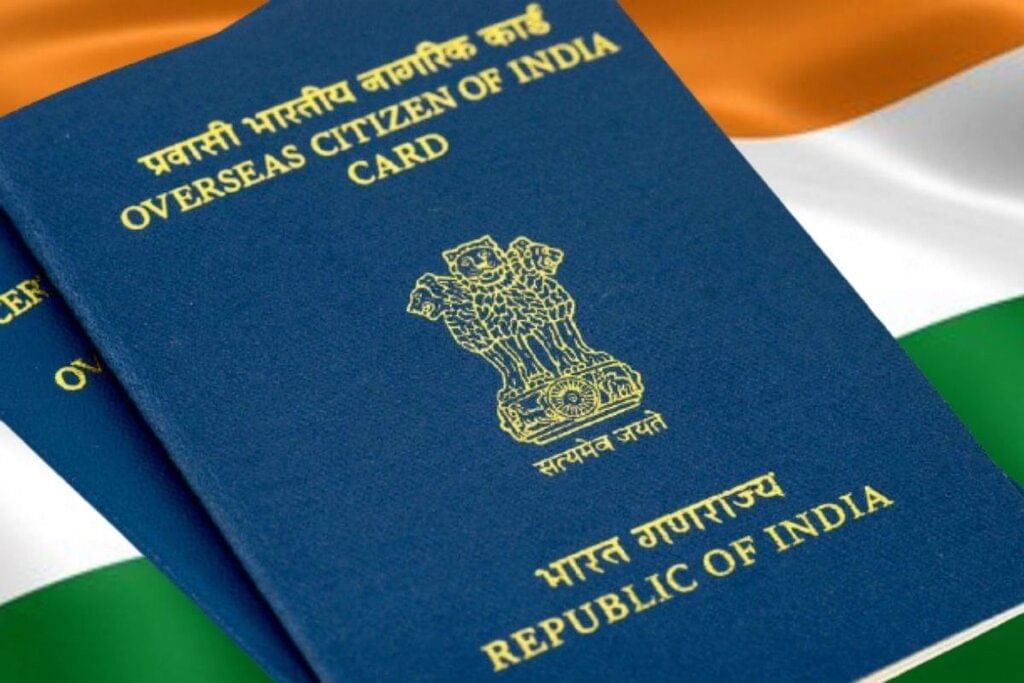 Why in News?
Why in News?The Union Home Minister and Minister of Cooperation recently launched a new Overseas Citizen of India (OCI) Portal in New Delhi, highlighting the importance and features of the OCI scheme.
Key Takeaways
- The OCI scheme was introduced by amending the Citizenship Act, 1955, in August 2005.
- Eligibility includes individuals who were citizens of India or are descendants of Indian citizens.
- OCI cardholders enjoy various benefits but do not have political rights.
Additional Details
- Eligibility Criteria:Foreign nationals may apply for OCI if they:
- Were citizens of India at any time after 26th January 1950.
- Are descendants (children, grandchildren, great-grandchildren) of such citizens.
- Are minor children of eligible OCI applicants or Indian citizens.
- Spouses of Indian citizens or OCI cardholders married for at least two years.
- Benefits of OCI:
- Lifetime visa for visiting India with multiple entries.
- Exemption from foreigner registration for any length of stay.
- Equal treatment as NRIs in economic, financial, and educational fields.
- Eligibility for professional pursuits in fields like medicine and law (subject to certain tests).
- Limitations: OCI does not equate to dual citizenship and lacks political rights such as voting or holding certain government posts.
- Renunciation and Cancellation:
- OCI status can be renounced by declaration, leading to cancellation of registration.
- The Central Government may cancel OCI status for reasons such as fraud or disaffection towards the Indian Constitution.
In summary, the OCI scheme provides significant benefits for eligible individuals while maintaining specific restrictions and conditions that govern their status and rights in India.
GS3/Economy
Directorate General of Foreign Trade (DGFT)
Source: Financial Express
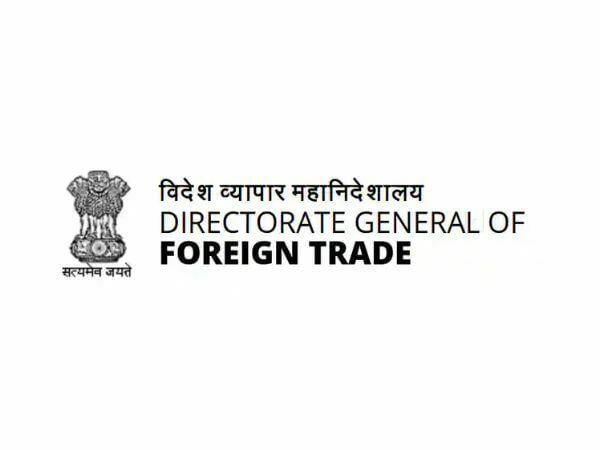 Why in News?
Why in News?The Government of India has revised its import policy concerning gold and silver to ensure that customs tariffs are in accordance with trade regulations, as recently notified by the Directorate General of Foreign Trade (DGFT).
Key Takeaways
- The DGFT is an attached office of the Ministry of Commerce and Industry in India.
- It is responsible for formulating and implementing India’s Foreign Trade Policy (FTP).
- Headquartered in New Delhi, the DGFT operates through 24 regional offices.
- Prior to 1991, it was known as the Chief Controller of Imports & Exports (CCI&E).
- Post-liberalisation, it was restructured as DGFT to function as a trade facilitator.
Additional Details
- Key Functions:
- Implements India’s Foreign Trade Policy (Exim Policy) through the issuance of various schemes, licenses, and notifications.
- Issues the Importer Exporter Code (IEC), a mandatory 10-digit unique code for all Indian importers and exporters.
- Regulates the transit of goods across Indian borders in accordance with bilateral treaties.
- Grants permissions for the export of free items listed in Schedule 2 of the export policy.
- Establishes standard input-output norms to determine the allowed quantity of inputs for the export of specified quantities of outputs.
- Facilitates regional trade promotion, particularly with neighboring countries.
- For further details, you can click to view more information on the recent modifications in import rules concerning certain gold and silver items.
This update highlights the DGFT's ongoing efforts to streamline trade regulations and enhance compliance with international standards.
GS2/Governance
Government Orders Nationwide Inspection of Jal Jeevan Mission Projects Amid Cost Overrun Concerns
Source: Indian Express
Why in News?
The Central Government has initiated a comprehensive review of the Jal Jeevan Mission (JJM) by deploying 100 teams of Central Nodal Officers for on-ground inspections. This decision comes after a recent meeting led by the Cabinet Secretary to assess the mission's schemes amidst rising concerns over cost overruns.
Key Takeaways
- The Jal Jeevan Mission aims to provide safe and adequate drinking water through individual household tap connections in rural India by 2024.
- The original budget for the mission has escalated from Rs. 3.6 lakh crore to Rs. 8.29 lakh crore due to revised cost estimates.
- Disparities exist among states regarding the execution speed and quality of the projects.
Additional Details
- Jal Jeevan Mission: Launched by the Ministry of Jal Shakti on August 15, 2019, this centrally sponsored scheme promotes a community approach to water supply, emphasizing the importance of creating a people's movement for water management.
- Key Achievements:
- Expansion of coverage to over 14 crore rural households, a significant increase from 3.2 crore in 2019.
- Sanctioning of over 6.4 lakh water supply schemes nationwide.
- Focus on sustainability, quality monitoring at the village level, and synergy with MGNREGA and SBM (Gramin).
- Challenges:The mission faces several hurdles, including:
- Escalating costs, with the price per tap connection rising from Rs. 30,000 to Rs. 1,37,500 in some regions.
- Slow implementation rates in various states, with issues in infrastructure setup and fund utilization.
- Quality concerns regarding pipeline infrastructure and intermittent supply.
- Monitoring and evaluation challenges due to the project's vast scale, complicating real-time auditing and verification.
In response to these fiscal and operational challenges, the Government of India will send 100 teams of nodal officers to inspect JJM schemes in 135 districts across 29 states and Union Territories. This initiative aims to ensure both cost efficiency and quality in project execution.
GS3/Science and Technology
NASA’s GRAIL Mission
Source: Times of India
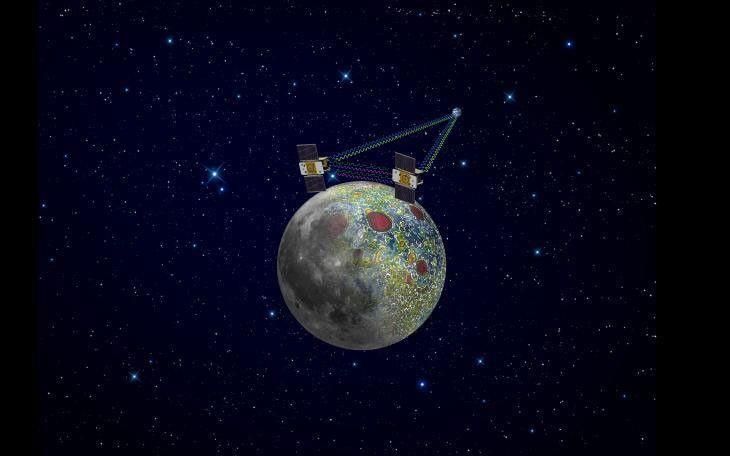 Why in News?
Why in News?Recent studies from NASA’s Gravity Recovery and Interior Laboratory (GRAIL) mission have led scientists to conclude that the differences between the Moon’s near side and far side are largely due to variations in their internal structures and volcanic histories.
Key Takeaways
- The GRAIL mission, launched in 2011, aimed to investigate the Moon's internal structure.
- Two spacecraft, Ebb and Flow, were used to measure gravity variations on the Moon.
- Findings revealed critical information about the Moon's crust thickness, internal composition, and subsurface features.
Additional Details
- Tidal Deformation: The near side of the Moon experiences greater bending due to Earth's gravitational pull, a phenomenon known as tidal deformation.
- Internal Activity: The near side is geologically more active and warmer compared to the far side, indicating differences in their internal structures.
- Volcanic History: Ancient volcanic activity has created extensive basaltic plains on the near side, while the far side remains more rugged and less geologically active.
- Heat Distribution: Elements such as thorium and titanium are more concentrated on the near side, resulting in temperatures that are 100–200°C higher than those on the far side.
- Crust Thickness: The near side has a thinner crust that allows magma to escape, whereas the far side's thicker crust traps heat and inhibits volcanic activity.
- The thinner crust on the near side also facilitates higher concentrations of heat-producing elements, further increasing the thermal contrast between the two lunar hemispheres.
The insights gained from the GRAIL mission are significant as they aid in the planning of future lunar missions, enhancing navigation and timing systems. Additionally, the methods developed through GRAIL could be applied to other celestial bodies, such as Enceladus and Ganymede, which may harbor conditions suitable for life.
GS1/Geography
Key Facts about Mullaperiyar Dam
Source: Indian Express
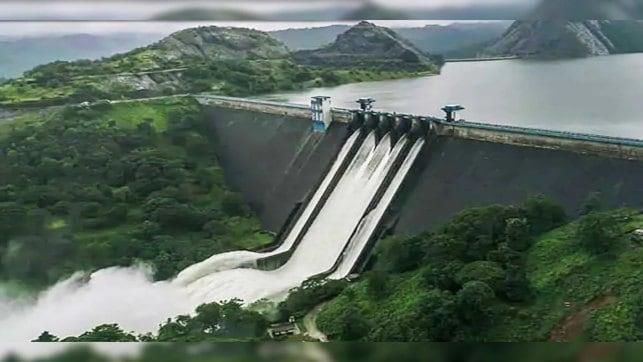 Why in News?
Why in News?The Supreme Court recently directed Tamil Nadu and Kerala to resolve contentious issues related to the Mullaperiyar dam with expert intervention.
Key Takeaways
- The Mullaperiyar Dam is situated on the Periyar River in Thekkady, Idukki district, Kerala.
- It was constructed between 1887 and 1895 by the British Corps of Royal Engineers.
- The dam is primarily operated by Tamil Nadu under a 999-year lease agreement.
- There is an ongoing dispute between Kerala and Tamil Nadu regarding the dam's safety.
Additional Details
- Location: The dam is located at an elevation of 881 meters above sea level in the Western Ghats, at the confluence of the Mullayar and Periyar rivers.
- Construction Materials: It was built using limestone and a mixture known as "Surkhi," which consists of burnt brick powder combined with sugar and calcium oxide.
- Dimensions: The dam stands 53.6 meters (176 feet) tall and stretches 365.7 meters (1,200 feet) long, with a storage capacity of 443 million cubic meters (11.5 billion cubic feet).
- The dam has created an artificial lake and reservoir covering an area of 8.5 square kilometers.
- Environmental Significance: The dam is surrounded by Periyar National Park, known for its biodiversity and home to many endangered species.
- Primary Function: The main purpose of the dam is to transfer water from the Periyar River to the Vaigai River basin in Tamil Nadu for irrigation and power generation.
In recent years, there have been calls from Kerala for the dam to be strengthened or decommissioned due to safety concerns, which Tamil Nadu has opposed. The Supreme Court's involvement aims to facilitate a resolution between the two states regarding these critical issues.
GS2/International Relations
Understanding India’s Relationship with Turkey and Azerbaijan
Source: Times of India
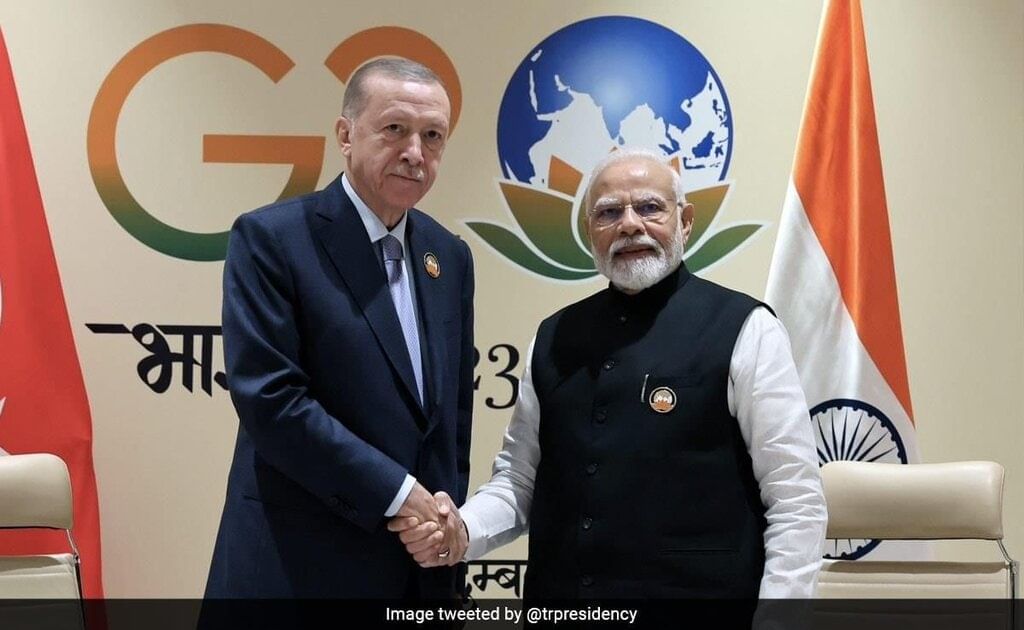 Why in News?
Why in News?Recent diplomatic tensions have arisen between India, Turkey, and Azerbaijan following Turkey and Azerbaijan's support for Pakistan after the Pahalgam massacre. This has led to significant public backlash in India, prompting calls for boycotts against both nations.
Key Takeaways
- The support from Turkey and Azerbaijan for Pakistan has strained their relations with India.
- Social media has amplified calls for boycotts, resulting in increased travel cancellations and institutional suspensions of ties.
- India's economic dependency on Turkey and Azerbaijan is minimal, suggesting limited losses from potential trade bans.
Additional Details
- Support for Pakistan: Turkey and Azerbaijan publicly backed Pakistan following India's military confrontations, particularly after the Pahalgam massacre, leading to heightened tensions.
- Impact on Trade: India's crude oil imports from Turkey and Azerbaijan constitute less than 1% of total imports, indicating a low economic dependency.
- Suspensions of Agreements: Indian institutions like IIT Bombay and IIT Roorkee have suspended MoUs with Turkish universities in response to the situation.
- Arms Trade Dynamics: Turkey has been a significant arms supplier to Pakistan since the 1990s, which complicates India's position regarding Pakistan and impacts its relations with Turkey.
- Tourism Trends: Despite recent tensions, there has been a notable increase in Indian tourists visiting Turkey and Azerbaijan, attributed to their appeal as affordable travel destinations.
Going forward, India should focus on promoting diplomatic dialogue and enhancing cultural and economic ties with Turkey and Azerbaijan to mitigate tensions and foster better relations.
GS3/Science and Technology
GS1’s New Generation QR Codes
Source: The Hindu Why in News?
Why in News?
GS1, a leading global standards organization, has announced plans to implement new generation QR codes worldwide by 2027. This initiative aims to enhance product identification and supply chain transparency.
Key Takeaways
- GS1 is a non-profit international organization focused on developing global data standards.
- The new QR codes will improve data capacity, enabling better product traceability and consumer transparency.
- Initial packaging will feature dual codes to support compatibility with existing Point-of-Sale (POS) systems.
- Eventually, only the new QR codes will be used once retail infrastructure is upgraded.
Additional Details
- What is GS1: GS1 (Global Standards One) is an organization that has been instrumental in developing standards since it introduced barcodes nearly 50 years ago, operating in over 100 countries, including GS1 India.
- QR Code: A QR Code (Quick Response Code) is a 2D barcode developed in 1994 that can store significantly more data than traditional barcodes. It is widely used in applications such as UPI payments and ticketing.
- Barcode: A barcode is a machine-readable visual representation of data. Originally developed in 1973 by George Laurer and Norman Joseph Woodland, it allows for the quick identification of products, patients, shipments, and records.
The transition to new generation QR codes represents a significant advancement in technology, promising enhanced efficiency and safety throughout the supply chain.
GS3/Environment
What is Operation Olivia?
Source: Times of India
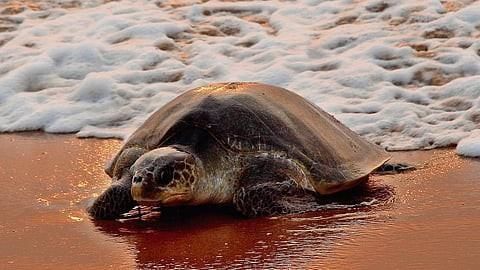 Why in News?
Why in News?As of February 2025, the Indian Coast Guard (ICG) has successfully protected a record 6.98 lakh Olive Ridley turtles during their mass nesting period at the Rushikulya river mouth in Odisha.
Key Takeaways
- Operation Olivia is an annual conservation initiative that aims to safeguard Olive Ridley turtles during their nesting season.
- It has been in operation since the early 1980s and primarily targets the coastline of Odisha.
Additional Details
- Launch: Operation Olivia was initiated in the early 1980s as a conservation mission.
- Main Objective: The primary goal is to protect Olive Ridley turtles from November to May during their nesting season.
- Primary Locations: Key focus areas include Gahirmatha Beach, Devi River mouth, and Rushikulya River mouth.
- Turtle Nesting Scale: Annually, over 8 lakh turtles come to these sites to nest.
- Surveillance Efforts: The Coast Guard has conducted more than 5,387 surface patrols and 1,768 aerial missions to monitor the turtles.
- Community Engagement: Fishermen are encouraged to utilize Turtle Excluder Devices (TEDs) to allow turtles to escape from fishing nets.
About Olive Ridley Turtles
- Appearance: Named for their distinctive olive-green shell or carapace.
- Diet: These turtles are omnivores, primarily feeding on jellyfish, crustaceans, and mollusks.
- Nesting Behaviour: They are known for a unique phenomenon called Arribada, where thousands of females come ashore simultaneously to lay eggs.
- Habitat Range: Olive Ridley turtles are found in the warm waters of the Pacific, Atlantic, and Indian Oceans.
Major Nesting Sites in India
- Gahirmatha Marine Sanctuary, Odisha (largest site, discovered in 1981)
- Devi River mouth, Odisha (discovered in 1994)
Protection Status
- IUCN Red List: Listed as Vulnerable.
- CITES: Included in Appendix I, which bans international trade.
- Wildlife Protection Act, 1972: Listed under Schedule I, providing the highest legal protection in India.
In a notable question from UPSC 2002, it was asked: The sea coast of which one of the following states has become famous as a nesting place for the giant Olive Ridley turtles from South America? Options: (a) Goa (b) Gujarat (c) Odisha* (d) Tamil Nadu.
GS2/Polity
National Investigation Agency (NIA)
Source: The Hindu
Why in News?
Recently, the National Investigation Agency (NIA) has made headlines by arresting two individuals, one of whom is an alleged militant, in relation to violent incidents occurring in Manipur.
Key Takeaways
- The NIA is India's primary counter-terrorism agency.
- It was established under the National Investigation Agency Act, 2008, post the 26/11 Mumbai terror attacks.
- The agency has the authority to investigate and prosecute offenses that threaten India’s sovereignty and security.
Additional Details
- Jurisdiction: The NIA operates across India and has authority over Indian citizens abroad. Its jurisdiction extends to offenses committed on Indian ships and aircraft, as well as crimes outside India that impact Indian citizens or interests.
- Powers and Mandate:
- The NIA can investigate Scheduled Offences, which include laws such as the Unlawful Activities (Prevention) Act, the Arms Act, and the Explosives Act.
- It can initiate investigations based on orders from the Central Government when a Scheduled Offence is suspected.
- The agency has the authority to prosecute cases in Special NIA Courts and coordinate with state police.
- It can also conduct extraterritorial operations and facilitate international legal cooperation.
- Headquarters: The NIA is headquartered in New Delhi and has zonal offices located in cities such as Guwahati and Jammu.
- Leadership: The agency is led by a Director-General (DG), who is usually a senior officer from the Indian Police Service (IPS).
The NIA plays a critical role in ensuring national security by addressing terrorist activities and related offenses, thereby contributing to the safety and integrity of India.
|
45 videos|5366 docs|1135 tests
|
FAQs on UPSC Daily Current Affairs: 20th May 2025 - Current Affairs & Hindu Analysis: Daily, Weekly & Monthly
| 1. What is the Overseas Citizenship of India (OCI) scheme? |  |
| 2. Who is eligible to apply for OCI status? |  |
| 3. What are the benefits of holding an OCI card? |  |
| 4. How can one apply for an OCI card? |  |
| 5. Is the OCI card the same as dual citizenship? |  |
















